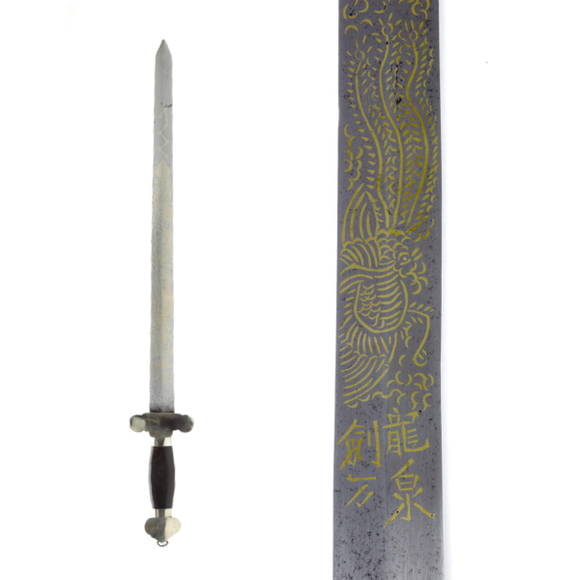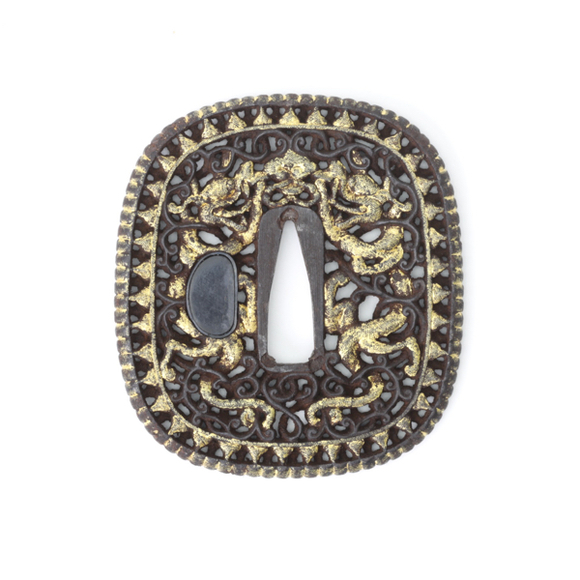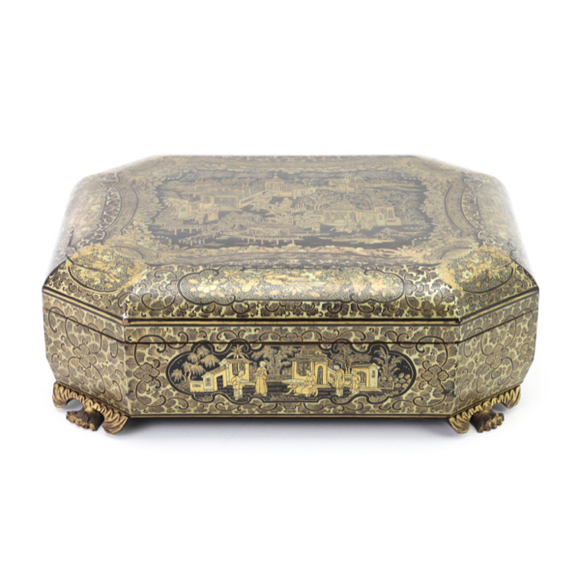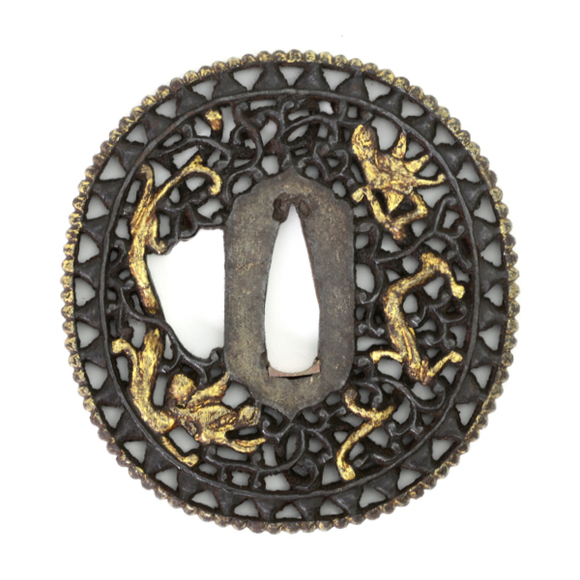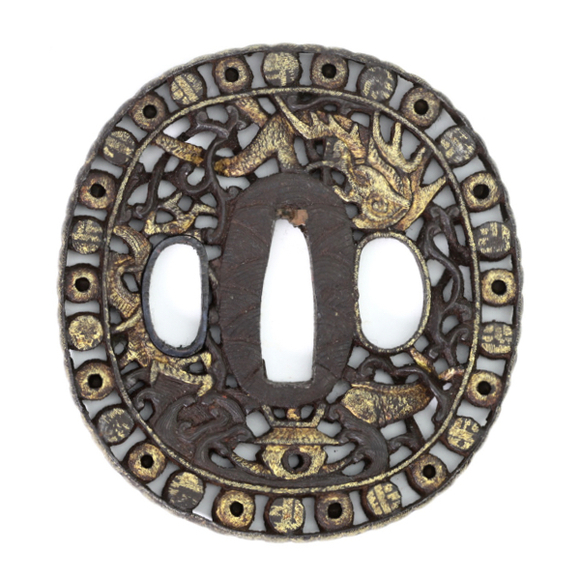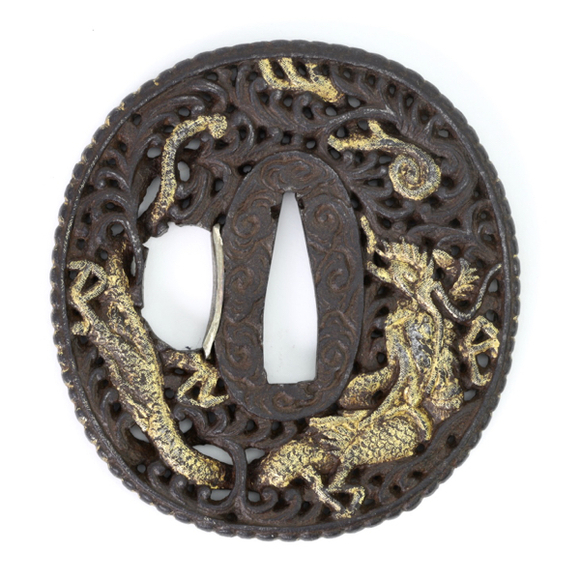A Chinese shortsword made by a well-known Longquan maker.

76.5 cm
60.4 cm
Base 6 mm
Middle 4 mm
Start backedge 4 mm
5 cm from tip 2 mm
Base 30 mm
Middle 26.5 mm
Start backedge 25 mm
5 cm from tip 18 mm
494 grams
13 cm from guard
Iron, steel, brass, wood, cotton, traces of gilding
Southern China
1876 or before
Description
A Southern Chinese officer saber with later inscription on blade. The blade is a slender liǔyèdāo (柳葉刀, "willof leaf saber") with a straight-ish base that tends towards an earlier yànlíngdāo (雁翎刀) or "goose quill saber" form. This feature and the strong taper in width are both typical examples of Southern Chinese bladesmithing.
The blade has two narrow grooves on each side and a blind backedge. Some signs of forge folding. These are generally very well made and a polish often shows a straightish grain with inserted high-carbon steel edge and signs of heat treatment.
The blade is fairly light, probably a daily side arm of an officer. Banner officers were obliged by law to always go about armed and so they typically had several sabers, some for parades, some for use in the field, and some for every day carry and self-defense. This, I think, is the latter.
The hilt is in typical southern fashion, consisting of well-made brass fittings with a beautifully deep patina. The guard resembles a Chinese coin, a feature often seen on these hilts. The execution on this one is a bit thicker than normally seen; often, the "spokes" of the coin are very thin and easily crack as many have.

There are some small traces of gilding to be seen on the mounts, indicating the hilt was once probably entirely gilt. Often the gold is still there, but the brass patina tends to seep through over time.
The wrap is done in indigo blue cotton, now black due to staining. The original blue can still be seen near the lanyard hole where there is some slight damage. It was wrapped over a red fabric background.
Inscription on blade
The blade bears an engraved marking on the right side:

"H. Hunt 1876"
The work was clearly not done by someone familiar with Western script, and he probably worked from a handwritten note by the looks of it.
There was a Henry Joseph Hunt (1837-1918) who was an English trader. He set sail for East Asia from Gravesend on the 13th of August, 1864 on a ship called the Alexandria, captained by Captain Hugh Baird, heading for Shanghai. He lived in Shanghai from 1864-1867 as an agent of Jardine Matheson, with occasional trips to Japan. He later settled in Japan where he built up a flourishing import/export business. He was a close friend of Rudyard Kipling. His residence in Nagasaki, The Glover Mansion, has been turned into a museum.1
The date is a nice to have because it suggests that the saber is at least from that year, and probably even a little older. This creates a benchmark that helps put other unsigned pieces in perspective.
Notes
1. Thanks for my friend Wong Yuen-Ming for pointing out references to Henry Joseph Hunt at Bonhams and Dukes Auctions.















A nice example with unusually fine lacquerwork and a monogram in the lid.
Canton work for the Japanese market, with 28 metal balls in separate compartments.

